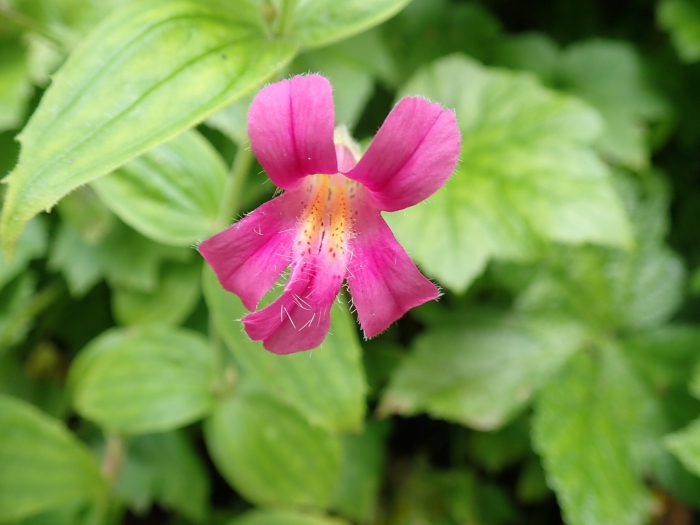Great Purple Monkeyflower
(Erythranthe lewisii)
Great Purple Monkeyflower (Erythranthe lewisii)
/
/

John Brew
CC BY 4.0
Image By:
John Brew
Recorded By:
Copyright:
CC BY 4.0
Copyright Notice:
Photo by: John Brew | License Type: CC BY 4.0 | License URL: http://creativecommons.org/licenses/by/4.0/ | Rights Holder: John Brew | Publisher: iNaturalist | Date Created: 2019-07-23T21:15:12Z |

















































Estimated Native Range
Summary
Erythranthe lewisii, commonly known as Great Purple Monkeyflower, is an evergreen perennial herb that thrives in moist, open areas such as stream banks, wet meadows, and seepage areas in the Western United States and Canada. It is particularly associated with the montane and subalpine zones, where it contributes to the ecological diversity of these regions. The plant typically has a stem length ranging from 25 to 80 cm and bears lanceolate leaves that are 20 to 70 mm long, covered with fine hairs that give it a soft texture. The flowers of Erythranthe lewisii are showy, with a medium size and set on pedicels that are 30–70 mm long. They exhibit a color gradient from pale pink to dark magenta, depending on the population, and bloom from late spring to early summer.
The Great Purple Monkeyflower is valued for its vibrant flowers and is often used in water gardens, bog gardens, and other moist cultivation settings. It has been recognized for its ornamental value by the Royal Horticultural Society’s Award of Garden Merit. While it is relatively easy to maintain, it requires consistently moist conditions and does not tolerate drought or prolonged freezing temperatures. It is best grown in full sun to part shade and prefers soils with medium drainage. Gardeners should be aware that it can be susceptible to powdery mildew and should provide good air circulation to prevent this issue.CC BY-SA 4.0
The Great Purple Monkeyflower is valued for its vibrant flowers and is often used in water gardens, bog gardens, and other moist cultivation settings. It has been recognized for its ornamental value by the Royal Horticultural Society’s Award of Garden Merit. While it is relatively easy to maintain, it requires consistently moist conditions and does not tolerate drought or prolonged freezing temperatures. It is best grown in full sun to part shade and prefers soils with medium drainage. Gardeners should be aware that it can be susceptible to powdery mildew and should provide good air circulation to prevent this issue.CC BY-SA 4.0
Plant Description
- Plant Type: Herb
- Height: 1-3 feet
- Width: 1-2 feet
- Growth Rate: Rapid
- Flower Color: Purple
- Flowering Season: Summer, Fall
- Leaf Retention: Evergreen
Growth Requirements
- Sun: Full Sun, Part Shade
- Water: Medium
- Drainage: Medium
Common Uses
Bee Garden, Bird Garden, Butterfly Garden, Fire Resistant, Hummingbird Garden, Low Maintenance, Showy Flowers, Water Garden
Natural Habitat
Moist, open areas such as stream banks, wet meadows, and seepage areas in montane and subalpine zones
Other Names
Common Names: Purple Monkeyflower, Lewis’ Monkeyflower
Scientific Names: , Mimulus lewisii, Erythranthe lewisii, Mimulus roseus, Mimulus lewisii var. tetonensis, Mimulus lewisii var. exsertus, Mimulus lewisii f. albus, Mimulus lewisii f. leuceruthrus, Mimulus lewisii f. lewisii, Mimulus lewisii f. tetonensis
GBIF Accepted Name: Erythranthe lewisii (Pursh) G.L.Nesom & N.S.Fraga